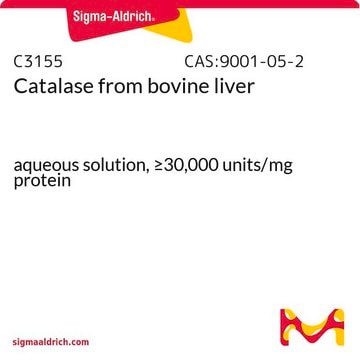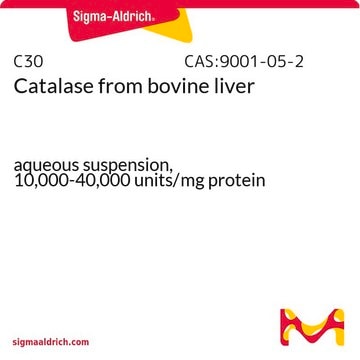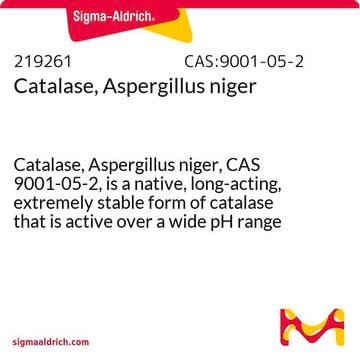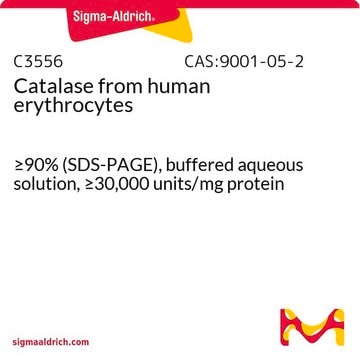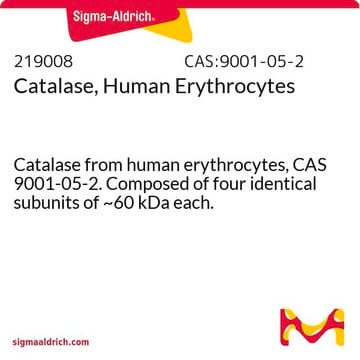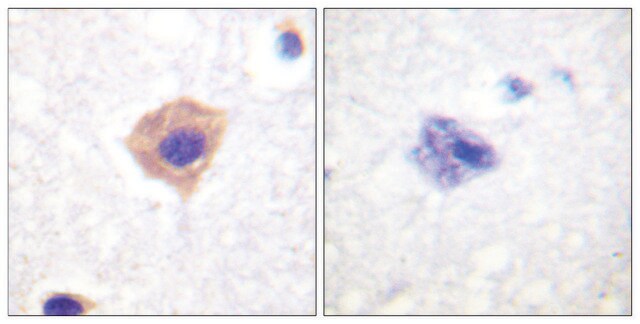02071
Catalase from Corynebacterium glutamicum
solution, deep brown, ≥500000 U/mL
About This Item
Produits recommandés
Source biologique
bacterial (Corynebacterium glutamicum)
Forme
solution
Concentration
≥500000 U/mL
Couleur
deep brown
Conditions d'expédition
wet ice
Température de stockage
2-8°C
InChI
1S/C9H10O3/c1-2-12-9(11)7-3-5-8(10)6-4-7/h3-6,10H,2H2,1H3
Clé InChI
NUVBSKCKDOMJSU-UHFFFAOYSA-N
Description générale
Application
Actions biochimiques/physiologiques
Définition de l'unité
Forme physique
Mention d'avertissement
Warning
Mentions de danger
Conseils de prudence
Classification des risques
Flam. Liq. 3
Code de la classe de stockage
3 - Flammable liquids
Classe de danger pour l'eau (WGK)
WGK 1
Point d'éclair (°F)
105.8 °F - closed cup
Point d'éclair (°C)
41 °C - closed cup
Équipement de protection individuelle
Eyeshields, Faceshields, Gloves, type ABEK (EN14387) respirator filter
Certificats d'analyse (COA)
Recherchez un Certificats d'analyse (COA) en saisissant le numéro de lot du produit. Les numéros de lot figurent sur l'étiquette du produit après les mots "Lot" ou "Batch".
Déjà en possession de ce produit ?
Retrouvez la documentation relative aux produits que vous avez récemment achetés dans la Bibliothèque de documents.
Les clients ont également consulté
Notre équipe de scientifiques dispose d'une expérience dans tous les secteurs de la recherche, notamment en sciences de la vie, science des matériaux, synthèse chimique, chromatographie, analyse et dans de nombreux autres domaines..
Contacter notre Service technique
